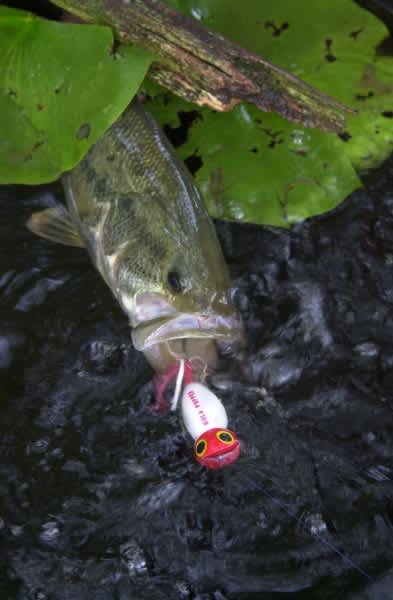The Edge of Light: Fishing the Shade
Dan Armitage 06.27.14

Followers of practically any wild game, furred or feathered, know that most critters are creatures of edges—transition zones between one cover type or another. The edge where the forest meets the open field, the edge between two crop types, the edge of a briar thicket, or the edge of the treeline often harbor more than their fair share of game.
The same is true of fish. The edge of a weed bed, the edge of a current break, the edge of a drop-off, or the “edge” of the thermocline are often where the densest concentrations of baitfish—and the gamefish that feed on them—are located.
An edge that many anglers overlook is the one created by shade. Natural shade is ever-present yet always changing as the sun moves across the sky, affecting the size, depth, and edge created by whatever stands between the sun and the water. Some areas remain shady throughout the day, and some features, such as docks, bridges, or boats at dock, offer near-permanent shade, fish-holding cover, and the transitional edges between light and dark that fish prefer.
The majority of shade, however, is moving, and offers a transitional target for anglers after the gamefish that frequent the dark side. A spot that was bright, clear, and fish-free in the morning may be cloaked in deep shade in the afternoon, and offer comfortable cover for a bass or pike or trout to use while awaiting a meal.
At my local lake, I have patterned the shade “opps” over two decades of fishing it. I know when to fish the west-facing shale cliffs and the east-facing forested banks, as well as the various coves to best take advantage of the cover offered by the sun’s movements. I concentrate on the edge where sunlight meets shade, knowing that the bass I seek often work the transition to their advantage, ambushing minnows that swim from shade to light where they are easily seen.
On the hottest summer days I often target the permanent shade around the bridge abutments supporting the causeways that pass over the reservoir. The sharp cement angles create defined edges between shade and light that often hold dense concentrations of fish. I happened to glance at the fish finder while passing under a span one bright summer day and saw the arcs that appeared and disappeared on the display screen as we passed from bright sun, through sudden shade, and back to sunlight. To take advantage of the cover, I quietly anchor back in the shade within casting distance of the light’s edge and cast into the illuminated area, retrieving minnow- or crawfish-imitating crankbaits back to the boat while expecting hits as the lures pass through the transition zone.
Night fishing under lights offers similar edges of illumination that fish find attractive. Using submersible lights to draw baitfish, the minnows often school-up in the light or dart through it at regular intervals. Meanwhile, the bass, walleyes, and trout hang on the edge of the cone of light and dart in and out or hang on the edge, nabbing baitfish that stray into the shadows. Casting jigs or crankbaits or suspending live baits under bobbers at the edge of the light often results in fast action on fish that work the transitional zone. Another tactic relies on blade baits cast or vertically jigged to work the bottom of the artificial light cone for predators that prowl the edge offered by the deepest light penetration.
At the other end of the night light-fishing spectrum, when I hear the fish crashing minnows and insects on the surface just outside of the glow’s perimeter, I know it’s time to break out the surface baits. Casting out into the darkness I enjoy audible fishing action working the edge of light that—day or night—fish find so attractive.

